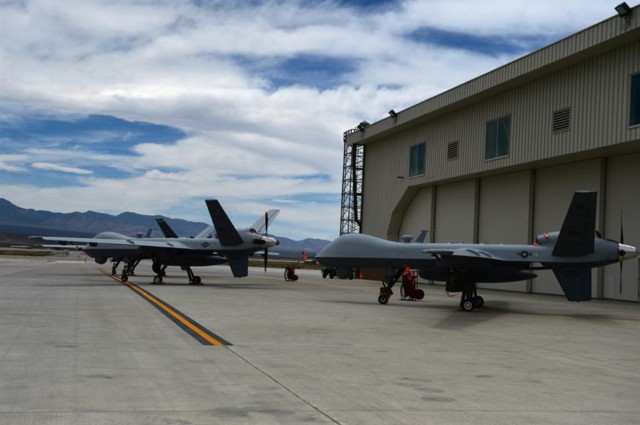The US Air Force has selected Tyndall Air Force Base, Florida, as the preferred location for hosting a new MQ-9 Reaper Wing with 24 remotely piloted aircraft. Vandenberg AFB, California, is considered a reasonable alternative.
The wing will be composed of an operations group with mission control elements as well as a launch and recovery capability, and a maintenance group.
“We selected Tyndall Air Force Base because it was the best location to meet the unique requirements of the MQ-9 Reaper,” Secretary of the Air Force Heather Wilson said.
That includes fewer aircraft competing for air space, nearby training ranges, great weather and lower up-front costs, Wilson added.
This selection will also meet the goals of Air Combat Command’s Culture and Process Improvement Plan which identified the need for additional basing locations to help diversify assignment opportunities for personnel within the MQ-9 enterprise, provide increased opportunities for leadership from within the community, and provide flexibility to enhance integration with other warfighter organizations and capabilities.
“Remotely Piloted Aircraft and the intelligence capabilities supporting them remain vital to our national security and the security of our allies,” said Air Force Chief of Staff Gen. David L. Goldfein. “Equally important is the increasing use of RPAs in defense of the homeland and response to humanitarian disaster as we have seen recently with hurricanes and wildfires. Co-locating this wing with [U.S. Northern Command’s] Air Operations Center and 1st Air Force will bring increased capability to support Gen. Lori Robinson in addition to increasing lethality and giving our other combatant commanders the best trained operators possible.”
The Air Force previously announced Shaw AFB, South Carolina as the preferred alternative for an operations group with mission control elements. The operations group will have no aircraft assigned.
Tyndall AFB remains the preferred alternative for this basing action. The final basing decision will be made by the Secretary of the Air Force only after the environmental analysis is complete.
Based on current projections, Airmen are expected to begin arriving at the new location as early as 2020. The first aircraft are expected to arrive in 2022.
Source: USAF Press Release

